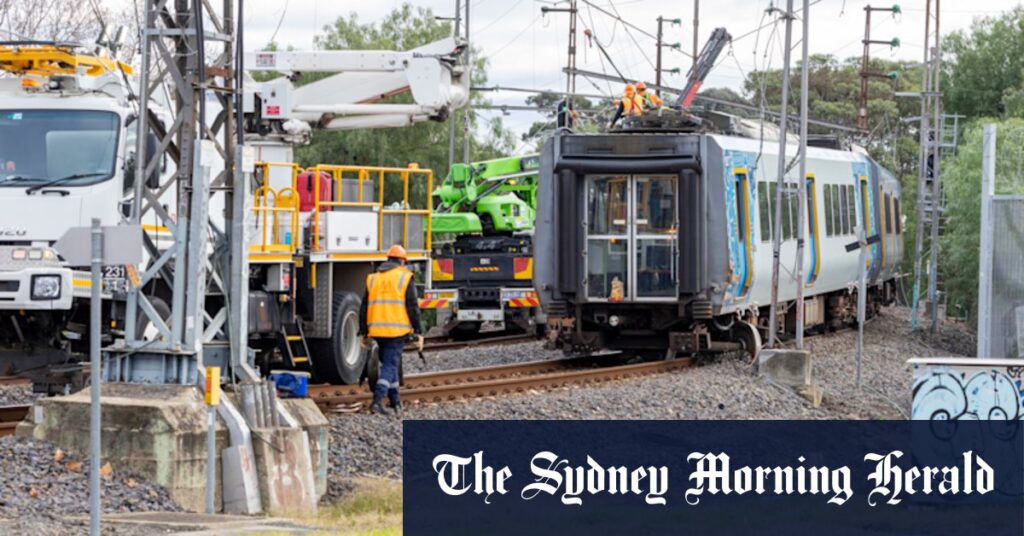Mitchell said 27 rail sleepers were replaced on a key track section four nights before the derailment, but would not be drawn on the suggestion that a fault in these repair works caused the incident.
“I wouldn’t say that,” Mitchell said. “I think we need to understand more before we can actually nominate what caused it.”
The ATSB preliminary report found the X’Trapolis train travelled around the bend toward Clifton Hill station at 28km/h – well below the 40km/h speed limit for that section of track.
Two drivers and about 30 passengers were aboard, but none were injured.
Commuters had to wait about three hours to disembark because derailment caused electrical arcing – a phenomenon where bolts of electricity dangerously flash through the air.
A photo shows the bogie twisted out from underneath the carriage. Credit: Patrick Hatch
The two train drivers were not aware of the derailment until they heard the electrical arcing and saw the wires in front of them sag, the report said.
The drivers then slammed on the brakes and the train stopped after travelling about 120 metres “in a derailed state”.
Mitchell said a final report would be released in 12 to 18 months.
“I’m very conscious that this derailment inconvenienced tens of thousands of commuters for the better part of a week,” he said.
“It is important that we uncover not only what occurred, but more importantly, why this occurred and what can be implemented in the future to prevent a reoccurrence.”
Start the day with a summary of the day’s most important and interesting stories, analysis and insights. Sign up for our Morning Edition newsletter.
Read the full article here

